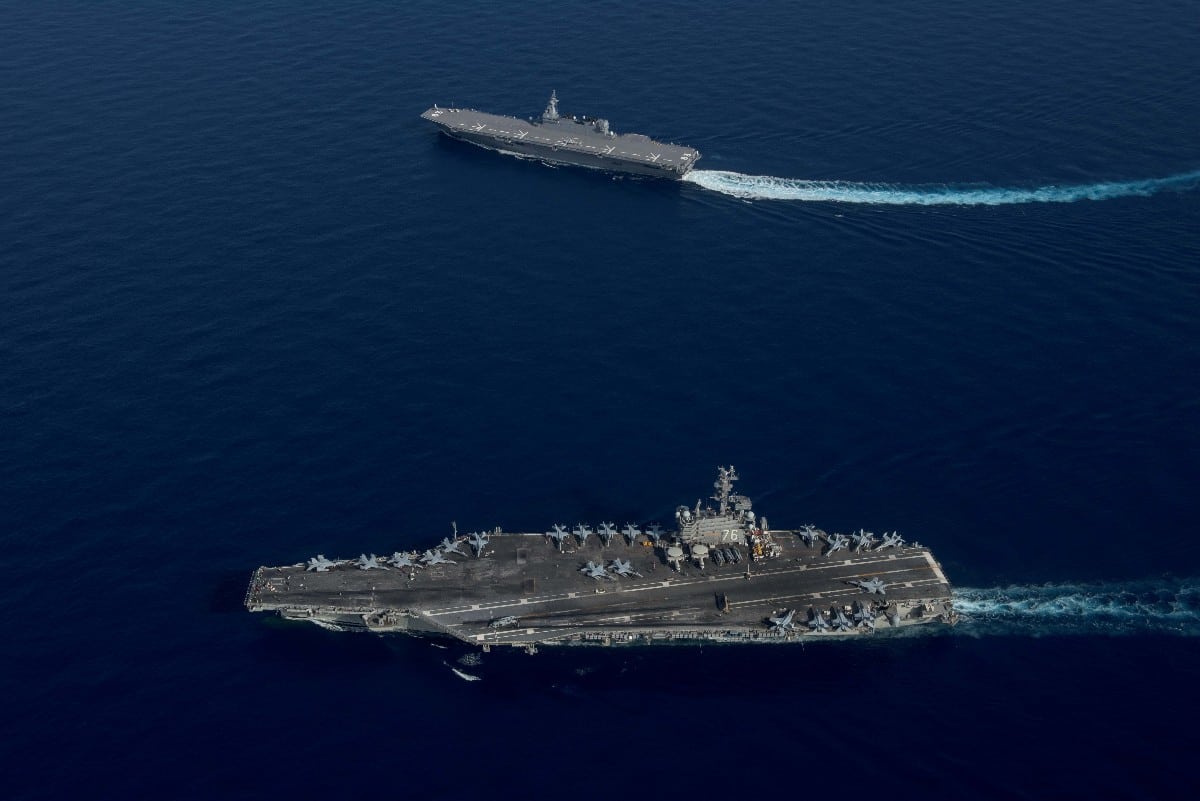 Photo courtesy of U.S. Pacific Fleet on Flickr
Photo courtesy of U.S. Pacific Fleet on Flickr
Keeping the South China Sea Open: How and Why?
With the June 11 reappearance of Chinese missiles on disputed islands in the South China Sea, it is clear that China’s attempt to establish dominance in the long-disputed territory is not slowing down. This attempted assertion is further shown through China’s commitment to the Nine-Dash Line, the continuous Chinese build-up of islands’ land mass, and the constant presence of Chinese warships and marine vessels patrolling the area, among other “aggressive” acts. Such behavior has exacerbated tensions in Sino-U.S. relations, and created strains in ASEAN nations’ relations – both among themselves, and with the U.S. It has also caused concern regarding the “openness” of the South China Sea. To ensure the openness and viability of the South China Sea, it is important for the U.S. to strengthen relations with ASEAN nations.
Maintaining an open South China Sea is important for both economic and political reasons. Over $5 trillion dollars’ worth of traded goods pass through the sea annually, and without an open sea route, trade in the area would decrease substantially. This would hinder Southeast Asian countries and give China an unfair economic advantage. These concerns are timely for the U.S. foreign policy agenda, as the U.S. entwines itself in a “trade war” with China.
Keeping the South China Sea open and accessible is high-ranked on the foreign policy agenda. To ensure accessibility of the territory, measures must be taken in two ways: by taking the “peace through strength” approach, and by bolstering relationships with/within Southeast Asian countries.
The “peace through strength” approach has garnered praise since Ronald Reagan, and has now been re-emphasized in U.S. foreign policy by the Trump Administration. U.S. Freedom of Navigation Operations (FONOPs) fall under the umbrella of all things “peace through strength,” as their aim is to prevent China from enforcing its territorial claim in the disputed waters. Controversy arises in that very mission as some deem the FONOPs as potential ignitors of a violent outbreak. However, these FONOPs are what the U.S. needs to promote security in the highly contested territory. Without them, there would be no substantial check on Chinese action in the disputed area.
In tandem with taking a “peace through strength” approach to the dispute, U.S. national policy should also more robustly attempt to bolster relations with Southeast Asian countries. A Council on Foreign Relations Task Force Report recommends that the U.S. maintains “regional security by preserving a credible military presence and a viable regional training and support structure.” In doing so, the report states that this “will help prevent both intraregional conflict and domination by outside powers.”
In addition to promoting relations between the U.S. and Southeast Asian countries, the U.S. should also focus on strengthening the relationships between these countries. Japan is already making efforts to do so. For instance, November 2014 marked the first-ever defense ministers’ meeting between Japan and ASEAN member countries. This meeting highlights the growing relations among Southeast Asian countries as China continues to assert its dominance in the area. Japan has also provided military equipment to neighbors in the region, including providing Vietnam with patrol boats and other marine vessels to help efforts against Chinese aggression. Additionally, Japan has aligned itself with the Philippines as it distributes marine vessels to the state, in response to growing Chinese aggression.
Ultimately, a united and coordinated front is necessary to ensure China does not usurp total control of the disputed South China Sea. By fortifying relationships with and amongst Southeast Asian countries, the U.S. will best be able to check Chinese territorial claims in the region over the long term. But in the short term, as these relationships are developing and countries in the region grow their military and economic powers, the U.S. should continue to emphasize its “peace through strength” strategy in order to establish a stable environment in which this development can occur. These multilateral relations are key to guaranteeing an open and viable South China Sea that is not entirely dependent on U.S. military activity.





